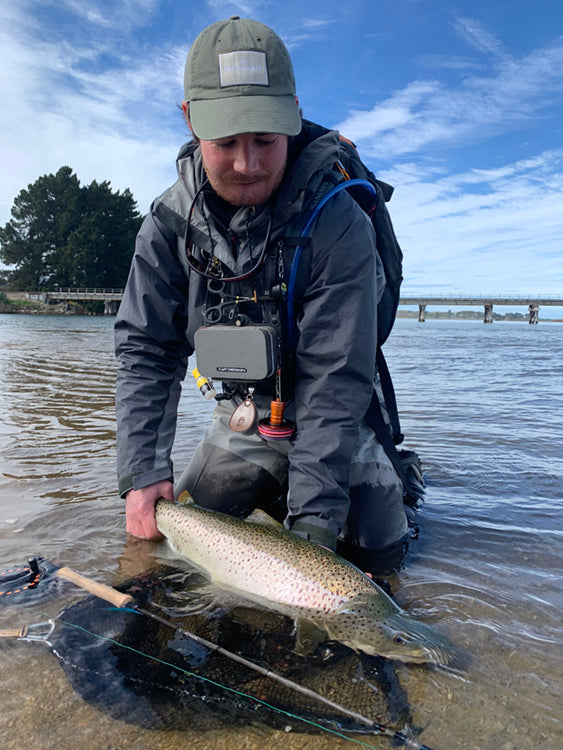Techy Thursday - Can't Find The Fish? Look For Structure
A couple of tough days away on our southern estuaries last week saw very few fish on the move so fellow fly fishing guide, Todd Adolph, and I had to work much more specifically rather than simply covering water to find fish that wanted to play. Local whitebaiters reported a slow few days and with very clear conditions there wasn’t a lot of prey out in the open for the sea runners to hunt down.
In such conditions it pays to first identify, and then work the structure of the tidal zone. Even on large bodies of water there are specific spots that will draw fish in most conditions.
The fish of the trip came early on once the incoming tide started to gain momentum, and currents and seams began to develop. Todd made his way quietly out to the edge of a gravel bar positioning himself perfectly to drop his fly down the seam where quicker, incoming tidal water pushed against slower water. As the accompanying photo shows, we were both pretty glad that he did.

Sometimes there can seem to be so much water to choose from, and yet just like a small trout stream, it can be broken down onto a series of hotspots.
Current / Tidal Seams
Just like the typical riffle where fast water meets slow, fish will often hang alongside the flow in the slack water in ambush of passing food.
Drop Offs
Drop offs offer the shelter and security of deeper water adjacent to food rich shallows. Estuarine browns will often cruise these drop offs darting in and out of the shallows to hunt.
Points & Bank Extensions
These are natural passing spots where currents will touch and slack water will form in the lee of. Any baitfish shoals patrolling the adjacent bays and inlets will pass close to the point as they move upstream.
Submerged Logs, Trees & Debris
This stuff makes for a great ambush location and a place where baitfish will also take cover. Dropping your streamer close to these locations and immediately stripping them away can draw out any predators in waiting.
The Upper Extremes of the Tidal Zone
Check your regulations to ensure this section is still open across the winter months, and if so, the transition zone makes for perfect spawning grounds for whitebait, and feeding grounds for trout. Once the rivermouth goes quiet as the tide turns and beyond, a quick trip upstream can often fill the net a few more times.
Whether you can sight fish this water or are working blind, focus your attentions on the above and you will certainly catch more estuary fish.
